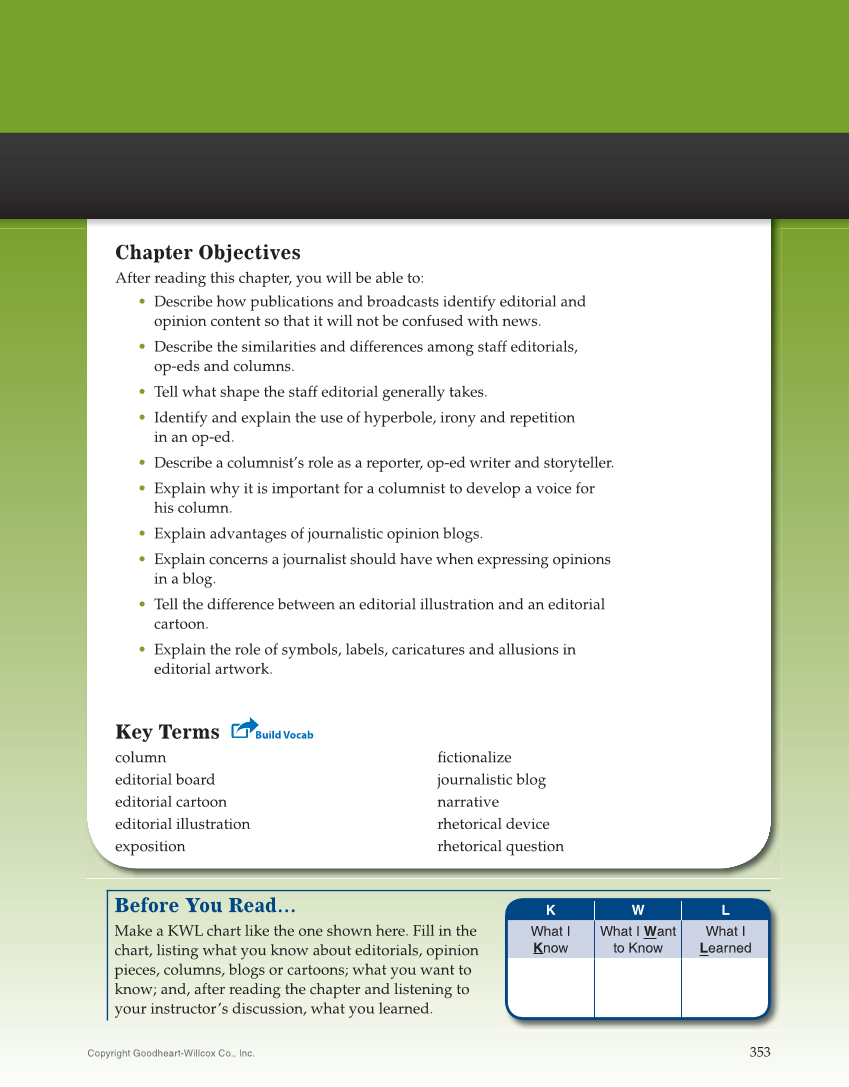Copyright Goodheart-Willcox Co., Inc. 353 Before You Read… Make a KWL chart like the one shown here. Fill in the chart, listing what you know about editorials, opinion pieces, columns, blogs or cartoons what you want to know and, after reading the chapter and listening to your instructor’s discussion, what you learned. Chapter Objectives After reading this chapter, you will be able to: • Describe how publications and broadcasts identify editorial and opinion content so that it will not be confused with news. • Describe the similarities and differences among staff editorials, op-eds and columns. • Tell what shape the staff editorial generally takes. • Identify and explain the use of hyperbole, irony and repetition in an op-ed. • Describe a columnist’s role as a reporter, op-ed writer and storyteller. • Explain why it is important for a columnist to develop a voice for his column. • Explain advantages of journalistic opinion blogs. • Explain concerns a journalist should have when expressing opinions in a blog. • Tell the difference between an editorial illustration and an editorial cartoon. • Explain the role of symbols, labels, caricatures and allusions in editorial artwork. Key Terms column editorial board editorial cartoon editorial illustration exposition fi ctionalize journalistic blog narrative rhetorical device rhetorical question Build Vocab K W L What I Know What I Want to Know What I Learned
